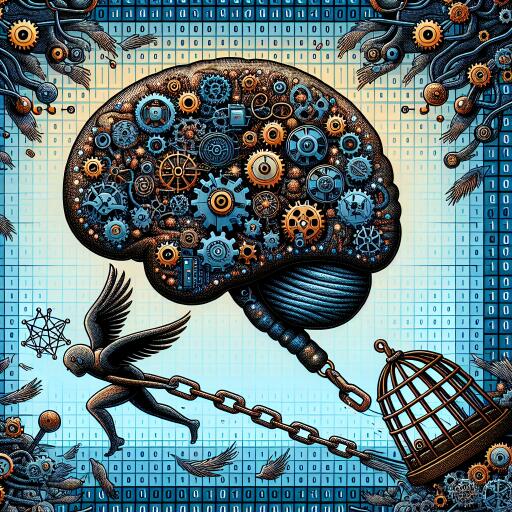AI’s Challenge to Internet Freedom: A Rising Threat
In October 2020, while commemorating International Internet Day, I shed light on the escalating threats to internet freedom—a narrative that, despite our advances in technology, remains more relevant and alarming today. With the observance of Safer Internet Day in February 2024, the call for a safer internet resonates louder, emphasizing a critical truth: there’s no genuine safety without freedom, whether we’re navigating the offline world or the vast expanses of the internet. The fabric of our online freedom now faces an unprecedented adversary: Artificial Intelligence (AI).
The annual reports by Freedom House, a non-profit organization, consistently highlight a troubling trend: a global decline in internet freedom for 13 consecutive years. Their latest report, titled “The Repressive Power of Artificial Intelligence,” amplifies this concern by spotlighting how governments worldwide harness AI to stifle free speech and target opposition, marking a new era of digital authoritarianism.
AI-driven surveillance tools and algorithms empower repressive regimes to carry out both direct and indirect censorship with frightening efficiency. Direct methods involve the use of AI to rapidly detect and eliminate online dissent, throwing a blanket over voices of opposition before they even have a chance to echo. AI’s capabilities extend to facial recognition technologies that can unmask protesters, making the act of sharing any form of dissent on social media a dangerous endeavor.
Indirectly, AI fuels misinformation campaigns through bots and synthetic media—deepfakes—that distort the truth, cultivating a pervasive sense of distrust among the public. This erosion of trust paralyzes collective action and pushes societies further into isolation and fear.
Moreover, the insidious use of AI doesn’t stop at government surveillance. The internet is fraught with individual threats spanning from cyberbullying to identity theft. AI technology, in its dark turn, facilitates the creation of explicit deepfakes and, more alarmingly, child sexual abuse material (CSAM). The ease with which AI can generate such material brings forth novel challenges for law enforcement and child protection agencies, exacerbating the effort to foster a safe online environment.
This treacherous landscape has sparked debates around proposed EU legislation aimed at curbing the spread of CSAM by mandating message scanning on platforms. While intentions behind the bill are to protect the vulnerable, it stirs fears of encroaching surveillance reminiscent of oppressive regimes, highlighting a dilemma between safeguarding privacy and ensuring security.
In response, organizations are leveraging AI for the greater good, turning the tide against online exploitation. An exemplar initiative is the project by the Communications Regulatory Authority of Lithuania (RRT) and Oxylabs, which uses AI to detect and eliminate CSAM across the web. This collaborative effort demonstrates the potential for AI to serve as a guardian of internet freedom and safety.
As we navigate the murky waters of AI’s impact on internet freedom, it’s essential to remember that AI itself is neutral. Its application, whether for oppression or protection, reflects our choices as a society. The future of internet freedom hinges on our ability to harness AI ethically, ensuring it becomes a tool for empowerment rather than suppression.
Internet freedom and safety are not mutually exclusive concepts. Through a balanced approach, we can secure our digital spaces without compromising on the liberties that define the essence of the internet. As we move forward, it is paramount that we continue to innovate and advocate for policies that foster both safety and freedom in the digital age.








